I stepped into a patch of purple milkweed (Asclepius purpurescens) to get a few pictures and then stood absolutely still as its wonderful fragrance rose up around me. It must have been a trick of the weather, just the right humidity and temperature, but it seemed the entire field was fragrant with the sweet smell.

These plants can grow as tall as six feet but seldom reach that height. Along the roadsides and in fields, mowers at some point always cut them back. The one above in my pasture is about four feet tall now.

I've decided to grow a few of these in my gravel garden. I wouldn't recommend anyone turn them loose near a group of perennials. They have a very long taproot and also spread by horizontal roots which could cause a problem if they aren't isolated. On the other hand, friends of mine grow them in a butterfly garden with mixed perennials and annuals and they remain quite polite and get along well with their neighbors. They would certainly work well in a bed with mostly annuals.

The flowers are really lovely and did I mention the fragrance, sweet, intense, maybe a hint of honeysuckle and vanilla.
On my farm, the pasture and hedgerows have many milkweed plants but in urban areas where there are few, growing a couple plants in your yard will likely bring you monarch butterflies. Milkweed (there are over a hundred native species) are the only plant the monarch lays its eggs on. You may well find yourself the host of monarch caterpillars (which will eat the leaves of the plant but not kill it). Bees, butterflies and approximately 400 species of insects use the common milkweed as a food source, so planting a few should make your yard a very popular dining area.
I've read that dead heading the blooms before they set seed will cause the plant to produce more flowers, perhaps as many as three flushes in a season.
I'll direct sow seed this fall where I want the plants to grow. With the long taproot, milkweed resents being moved. The seed needs a period of cold weather before it sprouts so planting in the fall will work very well, otherwise I'd have to put the seed in the freezer for a couple months. I have an excellent, sunny location where the plants can grow and be enjoyed, but they can't get tangled with the perennials.
From somewhere
a froth of seeds drifted by touched
with gold in the last light
of a lost day, going with
the wind as they always did.
~ Philip Levine's poem Milkweed
a froth of seeds drifted by touched
with gold in the last light
of a lost day, going with
the wind as they always did.
~ Philip Levine's poem Milkweed

Asclepius tuberosa (above) is another form of milkweed and one that grows well with other perennials. It requires well drained soil and full sun but does not spread beyond a tight clump. It grew very easily from the seeds I purchased and started indoors. Some I transplanted near a patch of yellow daylilies and others went near some nepeta. I've read that the tuberosa is the variety preferred by butterflies. I've also read that it is short lived but self seeds if allowed.







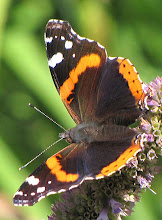
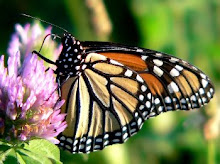












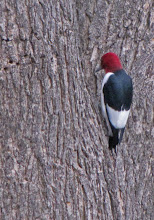



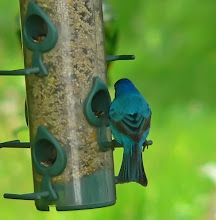

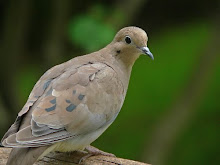

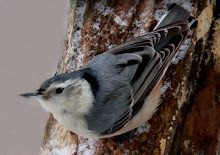




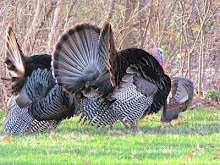


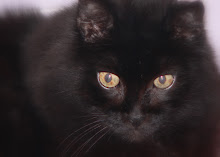

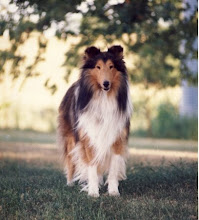










































35 comments:
Well that decides me. I was considering moving some milkweed in my garden because I so love the flowers, but won't now. I'll enjoy it in the wild. I think it is most wonderful. In a gravel garden would be great. I will make a special effort to smell it. The first time I ever saw it was on a walk on base. I was stunned by the round flower and picked a leaf. When I saw the milk I knew right away what it was. It is most beautiful. Do update us on your progress? And any butterflies?
I grow the asclepius tuberosa form. I have the orange/yellow and then a yellow color. The monarch caterpillars loved them last year as I imagine they will again this year. As you said, they are easy to start from seed as I did this year.
I have never seen a milkweed with five flower clusters, like the one in your first photo! Wow!!
Nor have I ver seen one that is six feet tall!! That would be something to see!
I just noticed the lovely fragrance this morning. You are right - it is sweet and lovely without being cloying!
Growing up in the country I have always been drawn to the milkweed plants (both kinds). I love the blossoms and then I love the seed pods of the purple milkweed. I used to love watching the milkweed silk float over the fields at my house or when I was out riding my horse. Thanks for the memories!
Oooooooo how pretty the purple is. I'm so disappointed. I planted seed for it but they didn't germinate. I love butterfly weed. We just got the Asclepius tuberosa in orange, but I think there is a yellow variety of it. I'd like to get it too.--Randy
Wonderful post Marnie. I grew some Purple Milkweed from seed last year and now I can't wait until it blooms (probably next year).
You just reminded me, where is my Swamp Milkweed? It's raining today so perhaps that will bring it out.
Butterfly Weed is such a vivid color. The only way I have been able to grow it is to spread fresh seed -- I haven't even been able to transplant the young ones. Makes for a very low mainteance mode of propagation. lol
We have Common Milkweed growing in several areas of the farm. The Monarch cats love it!
You are lucky to have a spot for these. I want some milkweed so bad. I am going to try to sow some seeds this fall. The monarchs are beginning to dance around the flowerheads here now. Fun to watch.
Hi Tina, I didn't mean to discourage you from growing it, just didn't want it crowding someone's fragile perennials. I haven't grown the purple ones so I don't know how fast they would spread in a garden of amended soil. They certainly could duke it out with hollyhocks or malva or any of the tougher perennials like coneflowers.
Hi Susie, this was my first year for starting asclepius tuberosa. I wish I'd known how easy it is to grow them.
Hi Judy, this has been a very good year for milkweed, plenty of rain. They don't always get that tall.
Hi Sherri, as kids, we loved throwing the seeds into the air and following them as the wind took them across a field.
Randy, maybe your seeds needed a period of cold stratification. I read they can be placed between two moist paper towels and into a plastic bag in the fridge for 3-6 weeks and then started indoors or out.
Hi SweetBay, I need to remember to check the pasture to see if there are caterpillars.
Good luck Lisa, it will be fun to have the plants close to the house to watch the butterflies and caterpillars.
Marnie
Marnie, You and I must be on the same wavelength lately:) My husband would never allow me to plant this type of milkweed anywhere on our farmstead, but I agree they have a beauty all their own, especially right now when they are flowering. I don't remember noticing their fragrance before, but I will have to take the time to smell a few while they are in flower.
I do have some tuberosas, though; the one I planted last year has really taken off this year. It looks wonderful in a perennial bed. I keep looking for butterfly larvae, but haven't seen any yet. Where are all the butterflies this year??
What a pretty shade of pink on that Milkweed. I have a 'Whorled' Milkweed that's never bloomed but it attracted a few monarch caterpillars to the garden last summer. It also prolifically sprouts up everywhere, quite a nuisance. :( My Butterfly Weed is getting ready to bloom and I'm quite thrilled since it's taken me a few times to get one to survive. It's all about location, location, location in my garden I guess.
Rose, it's all the cold and rain, it has taken a serious toll on our butterflies. Why does your husband so dislike the common variety?
Hi Racquel, that's what I'm afraid of, my heavy clay will kill the asclepius tuberosa overwinter. Well, trial and error I guess. I'll find the right location if I fail with the first ones.
Marnie
Hi Marnie.....such a beautiful wildflower and the perfume sounds delightful.
If it was native I would grow it without hesitation......to have such a beautiful butterfly come visit would be wonderful....
I can see there are many advantages to this pretty bloom........
I love milkweed and tried to transplant one from a friends field...it sure resented the move and quickly died. They are wonderful plants...Butterflyweed grows well here. I count myself lucky to have them. It has seeded itself a little but not as much as I hoped, so I'll set seed this summer and fall. I hope the monarch caterpillar shows up on yours so we can see them! gail
Finally wising up I'm encouraging them on the edge of my woodland gardens. Better late than never. Thanks for the tips.
I miss the milkweed, Marnie! I'm learning as I go about different species of butterflies in tropical areas. Found a new one (to me) in Gainesville last week.
I love seeing the wild milkweeds that grow here in the Black Hills of W South Dakota; the showy milkweed is in bloom now, large and pale pink, very pretty. Your photos are lovely!
What I thought was milkweed must not have been because it's not near as pretty as these are. Again, you educated me! Thank you!
Marnie, love the quote by Frost. He is a favorite of mine. I hadno idea there were so many native milkweeds. I have the light orange-grew most of it from seed last year and this year it has really grown and bloomed. But no caterpillars yet. :( I would love to find some of the deep orange and plant here as well.
A gravel garden sounds just the pace for the puprle kind. Easliy contained. Hope it works well for you.
I love milkweeds - they're always full of insects and activity! I managed to get common milkweed to naturalize from seed in my prairie garden, which is hot and dry and rocky and apparently milkweed heaven. It does tend to come up in inconvenient places but it's easy enough to break off. I generally cut down the plants in the front of the garden in case the dog decides to nibble b/c they are pretty toxic.
I wonder if I could get purple milkweed to grow... have to go find some seeds!
I don't think we have that here, I looked it up and it seems it came from Europe originally but I suspect that was warmer areas than ours. Oh for the beautiful Monarch Butterfly here! You have so many exotic insects which I wish we had in the UK.
Hi Cheryl, I believe the two I mentioned are native to the US.
Hi Gail, I hope mine likes the sites chosen for it. If not, I'll try again somewhere else.
Hi Troutbirder, that sounds like a good idea.
Hi Walk2Write, there is really a difference in the butterflies of different areas. I enjoy seeing them in the blogs I read.
Hi Jan, I haven't seen the pink ones. It would be great to trade seeds with someone in that area.
Marnie
Hi BeadedTail, there are lots of different milkweeds. Maybe the one in your area is a little different and not as showy.
Hi Beckie, I'm experimenting with different ideas. There just aren't many butterflies this year. Saw one yesterday at my father's on his buddleia. That is one of the few I've see lately. I love Frost too, he's my favorite.
Diane, send me your address and I'll mail you seeds later in the fall.
prairie_rose_z4@yahoo.com
Hi Songbird, doesn't it always seem that way. The grass is always greener... Our butterflies are a treasure but unfortunately people don't respect and appreciate them and their populations decline each year.
Marnie
Hi Marnie,
I haven't really taken time to stop and smell milkweed, now I will have to. It grows wild on roadsides up here. I loved the prose you shared.
I like the image of a froth of seeds, reminds of the dandelions we blew as children.
Rosey
Lovely plant....anything that attracts butterflies is a good thing. Sounds like you have the perfect spot to enjoy it without it becoming a problem.
Hi Rosie, I remember blowing those dandelion seeds into the wind too. Think of the weeds we spread;)
Hi Connie, I'm not sure it will be a problem. Just being cautious.
Marnie
Gorgeous photos!
Hi Marnie,
What lovely photos you have of milkweed! I never can grow the small orange kind very many seasons, and it doesn't get a good size like some I've seen other places. I have some Hello Yellows that are in their second season and seem to be doing better. I also have a couple swamp milkweeds, one with white, and one with pink flowers. They get aphids a lot, but I haven't seen any this year.
What I am pleased about this summer, is one of the kind you have is growing in one of the flower beds by the street. I never thought of it spreading from the roots. I was going to deadhead it.
Did those of you with lots of them know the flower buds are edible? There is a book by a Nebraska author, Kay Young, that you may want to find on Amazon with recipes using things you can find growing wild, including purslane, if my memory is correct. She did a tour of our local nature center for the herb society I was in before our grandson was born, and told us there we should be eating our purslane. LOL I do munch on it once in awhile while pulling it out.
Thanks for your comment on my blog. The goldenrod and some of my other flowers are blooming earlier than usual this year.
Kay Young's book is called, Wild Seasonings, and I see Barnes and Noble has it, but it's been around long enough some used ones should be available if anyone is interested.
Hi Marnie - what an interesting looking plant and great photos too. I haven't seen that in the nurseries up here ...
Hi Marnie,
So nice to see your photos of your milkweed for I've been enjoying the milkweed growing in our garden...some along the driveway and there's quite a bunch in the squash garden! It is so beautiful and I've taken many photos with intentions to draw it...
Thanks for sharing all of the information about it!
Hi Sue, thanks for the tip on the book. I'll look for it or maybe check the used books at amazon. BTW, I do eat my purslane, it is is really good for you. No recipe needed, put it in salads or just dump a handful on sandwiches, in stews and chilli, anything. It doesn't have much taste and just blends with any food.
Nan, it would make a lovely painting.
Hi Beth, you probably won't find it in nurseries. You'll have to pick a few seeds from a wild plant.
Hi Birdlady, thanks.
Marnie
My Dad kept a milkweed plant growing outside his back door, mostly to attract the butterflies, but also for the sweet scent that drifts as you walk by...ahhhh, sweet Nature!
I've had milkweed in one of my perennial beds for a few years and it's very well behaved. I planted it to attract butterflies and other creatures and you're right, it does.
Milkweeds have a beauty of their own, and these here are lovely.
My orange milkweed is just about done and my swamp (pink) milkweed hasn't bloomed yet... I love them both!
Post a Comment